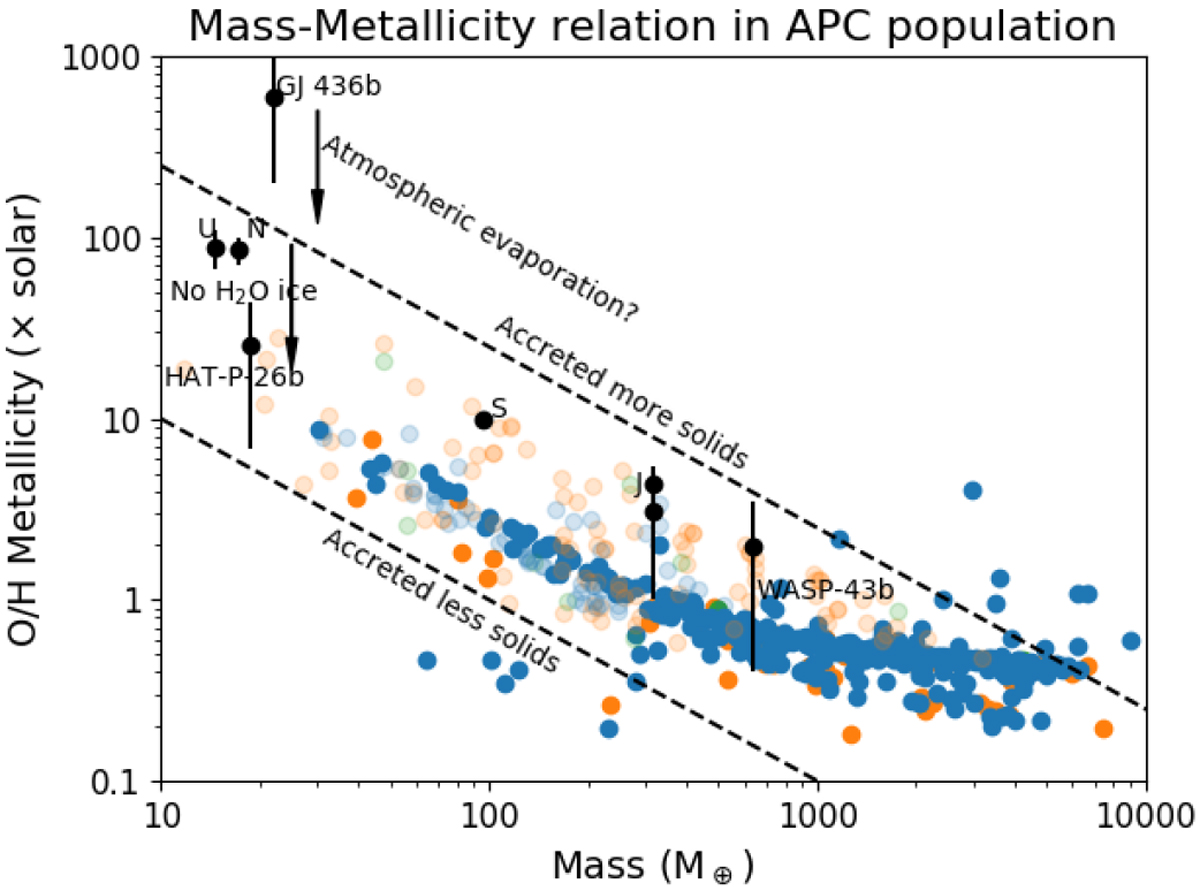Fig. 7

Mass-metallicity relation for the Alessi et al. (2020, APC) population of warm Jupiters, compared to the hot Jupiter population from Paper I (faded points). The Solar System giants (inferred by methane abundance and taken from Kreidberg et al. 2014), WASP-43 b (Kreidberg et al. 2014), GJ 436 b (Morley et al. 2017), and HAT-P-26 b (MacDonald & Madhusudhan 2019) (inferred from their water abundance) are also shown. In addition, we include the recent O/H measurement for Jupiter by Li et al. (2020) to show that, within uncertainty, the relation is independent of whether we used C/H or O/H to determine the metallicity. We include the O/Hs for our synthetic population and find that they follow the relation up to a mass of a few Jupiter masses, where they appear to flatten out. The colour of each point denotes the trap from which the planet originated: ice line (blue), dead zone (orange), and heat transition (green). This is a recreation of Fig. 12a from Paper I.
Current usage metrics show cumulative count of Article Views (full-text article views including HTML views, PDF and ePub downloads, according to the available data) and Abstracts Views on Vision4Press platform.
Data correspond to usage on the plateform after 2015. The current usage metrics is available 48-96 hours after online publication and is updated daily on week days.
Initial download of the metrics may take a while.


